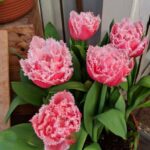Are you tired of spending endless hours tending to your yard and garden? If so, then landscaping ideas low maintenance may be just what you need. Low maintenance landscaping not only saves time and effort but also ensures a beautiful outdoor space with minimal upkeep. In this article, we will explore the importance of low maintenance landscaping and provide tips and ideas for creating a stunning yet easy-to-maintain landscape.
Maintaining a lush and vibrant outdoor space can be both time-consuming and labor-intensive. Low maintenance landscaping offers a solution to this challenge by reducing the need for constant care and attention. By choosing the right plants, designing an efficient layout, and incorporating low maintenance features, homeowners can enjoy a beautiful landscape without the hassle of excessive upkeep.
In the following sections, we will delve into various aspects of low maintenance landscaping, including selecting suitable plants, designing the layout, utilizing mulch and ground covers, lawn care tips, incorporating low maintenance features, practical maintenance advice, and real-life success stories. Whether you’re a busy homeowner or simply prefer to spend your time enjoying your outdoor space rather than maintaining it, embracing low maintenance landscaping can transform your yard into a stress-free oasis.
Choosing the Right Plants for Low Maintenance Landscaping
When it comes to low maintenance landscaping, choosing the right plants is crucial for achieving a beautiful and easy-to-care-for outdoor space. By selecting the appropriate plants, homeowners can minimize the need for constant upkeep and create a sustainable landscape that thrives with minimal intervention.
One of the key considerations when choosing plants for a low maintenance landscape is to opt for species that are well-suited to the local climate and require little water. Drought-tolerant flowers, succulents, and ornamental grasses are excellent choices for regions with hot and dry climates.
Succulents are known for their ability to store water in their leaves, making them incredibly resilient and well-suited to low maintenance landscaping. These plants come in a wide variety of shapes, sizes, and colors, allowing homeowners to create visually striking arrangements that require minimal care. Ornamental grasses are another excellent option for low maintenance landscaping, as they add texture and movement to the landscape while being highly adaptable to different soil types and weather conditions.
In addition to selecting the right plant species, it’s important to consider factors such as sunlight exposure and soil quality when choosing plants for a low maintenance landscape. By conducting a thorough assessment of these factors, homeowners can identify the most suitable plants for their specific outdoor environment. By carefully selecting low maintenance plants that are well-matched to the local climate and growing conditions, homeowners can create an attractive landscape that requires minimal upkeep.
| Low Maintenance Plants | Benefit |
|---|---|
| Succulents | Require little water and come in various colors and sizes |
| Ornamental Grasses | Adaptable to different soil types and weather conditions; adds texture and movement |
| Drought-Tolerant Flowers |
Designing a Low Maintenance Landscape
When it comes to creating a low maintenance landscape, careful planning and design play a crucial role. A well-thought-out layout can significantly reduce the time and effort required to upkeep the outdoor space. With the right design elements, homeowners can enjoy a beautiful and functional yard without the constant need for maintenance.
The Importance of Proper Layout and Design
One key aspect of designing a low maintenance landscape is to focus on functionality and simplicity. By incorporating efficient layouts and practical design elements, homeowners can minimize the need for ongoing maintenance. Creating defined spaces for different purposes, such as entertaining areas, vegetable gardens, or play areas for children, can help streamline the landscape’s upkeep.
Ideas for Incorporating Hardscaping Elements
In addition to plant selection, hardscaping elements can also contribute to a low maintenance landscape. Features such as stone pathways, gravel beds, and retaining walls not only add visual interest but also reduce the area that needs regular attention. These elements provide structure to the overall design while requiring minimal maintenance over time.
By considering these factors when designing a low maintenance landscape, homeowners can create an outdoor space that is not only aesthetically pleasing but also sustainable in terms of ongoing care. With careful planning and thoughtful design choices, maintaining a beautiful yard becomes much more manageable while still enjoying all the benefits of an inviting outdoor environment.
Utilizing Mulch and Ground Covers
When it comes to low maintenance landscaping, utilizing mulch and ground covers can be a game-changer for reducing weed growth and retaining moisture in the soil. Mulch not only helps to inhibit weed germination and growth, but it also adds a finished look to the landscape.
There are various types of mulch suitable for low maintenance landscaping, including shredded bark, wood chips, and gravel. Additionally, ground covers like creeping thyme or clover can serve as living mulch, providing the same benefits while adding visual interest to the landscape.
Benefits of Mulch and Ground Covers
Mulch and ground covers offer several benefits beyond weed suppression and moisture retention. These materials help to regulate soil temperature, protect plant roots from extreme weather conditions, and enhance overall soil health by promoting beneficial microbial activity. Furthermore, they can contribute to the aesthetic appeal of the landscape by creating texture and color contrast.
Choosing the Right Mulch and Ground Covers
When selecting mulch or ground cover for a low maintenance landscape, it’s essential to consider factors such as local climate, water availability, and desired aesthetic. For example, in arid regions, gravel may be a more practical option than organic mulches that require frequent watering.
It’s also important to choose materials that are long-lasting and won’t break down quickly, requiring frequent replacement. By carefully considering these factors, homeowners can effectively utilize mulch and ground covers in their low maintenance landscaping.
Incorporating these elements into your landscaping design can significantly reduce the time and effort needed for maintenance while still maintaining an attractive outdoor space. With proper selection and application of mulch or ground covers tailored to your specific needs, you can enjoy a beautiful landscape with minimal upkeep.
Low Maintenance Lawn Care
In addition to selecting the appropriate grass type, proper watering techniques play a significant role in low maintenance lawn care. Watering deeply but infrequently promotes deep root growth and reduces the need for frequent watering. Another landscaping idea low maintenance homeowners can consider is incorporating alternative ground covers to replace traditional grass lawns. Ground covers such as clover or ornamental grasses require less water and fertilizer, making them an appealing option for low maintenance landscapes.
Utilizing environmentally friendly approaches to maintaining a healthy lawn is also essential in low maintenance landscaping practices. For example, using organic fertilizers and natural pest control methods can contribute to a healthier lawn while minimizing the need for frequent treatments. By implementing these strategies, homeowners can create a vibrant, low maintenance lawn that enhances their outdoor living experience without requiring excessive time and resources.
| Low Maintenance Lawn Care Tips | Benefits |
|---|---|
| Choose slow-growing grass varieties | Reduces frequency of mowing |
| Utilize alternative ground covers | Requires less water and fertilizer |
| Use organic fertilizers and natural pest control methods | Promotes a healthier lawn with minimal treatments needed |
Incorporating Low Maintenance Features
When it comes to creating a low maintenance landscape, incorporating the right features can make a significant difference in reducing upkeep and enhancing the overall appeal of your outdoor space. By integrating elements that require minimal care and attention, you can achieve a beautiful and functional landscape without the constant need for maintenance. Here are some creative ideas for low maintenance features to consider:
- Artificial Turf: Consider replacing traditional grass lawns with artificial turf, which requires minimal upkeep and remains green and lush year-round. With advancements in technology, artificial turf now closely resembles the look and feel of natural grass without the need for mowing, watering, or fertilizing.
- Outdoor Lighting: Installing low voltage, LED lighting can enhance the aesthetics of your landscape while also providing safety and security benefits. LED lights are energy-efficient and have a longer lifespan, reducing the need for frequent bulb replacements.
- Water-Saving Irrigation Systems: Incorporating drip irrigation or automatic sprinkler systems with moisture sensors can help conserve water while keeping your plants healthy. These systems deliver water directly to the root zones of plants, minimizing wastage and reducing the time required for manual watering.
Integrating these features into your landscape design effectively involves thoughtful planning and strategic placement. By carefully considering the function and purpose of each feature, you can create a visually appealing and low maintenance outdoor space that aligns with your preferences and lifestyle.
By intentionally selecting features that require little to no maintenance, homeowners can enjoy a beautiful outdoor area without spending excessive time on upkeep. In the next section, we’ll delve into practical maintenance tips to ensure that your low maintenance landscape remains looking great year-round.
Maintenance Tips and Tricks
When it comes to creating a low maintenance landscape, incorporating practical maintenance tips and tricks is essential for keeping the outdoor space looking great year-round. One key tip for low maintenance landscaping is regular pruning, which helps control the growth of plants and keeps them healthy. By removing dead or overgrown branches, shrubs, and flowers, you can prevent the need for constant upkeep and maintain a tidy appearance in the garden.
Another important aspect of low maintenance landscaping is soil amendment. By improving the quality of the soil through composting or adding organic matter, you can create a healthier environment for your plants. This can reduce the need for frequent watering and fertilizing while promoting better overall growth and resilience in your garden.
Proper fertilization is also crucial for maintaining a low maintenance landscape. Using slow-release fertilizers can provide essential nutrients to your plants over an extended period, reducing the frequency of applications needed. Additionally, choosing natural or organic fertilizers can contribute to a more sustainable and eco-friendly approach to gardening.
By implementing these maintenance tips and tricks into your low maintenance landscaping plan, you can ensure that your outdoor space remains beautiful with minimal effort. Whether it’s regular pruning, soil amendment, or strategic fertilization, these practices will help you maintain a thriving garden while minimizing the time and energy required for upkeep. With careful planning and attention to these details, you can enjoy a stunning landscape that enhances your home without the need for extensive maintenance.
Case Studies and Success Stories
Low maintenance landscaping has gained popularity in recent years as homeowners seek to reduce the time and effort required to maintain their outdoor spaces. One successful case study is the transformation of a traditional high-maintenance lawn into a low maintenance landscape using drought-tolerant plants and hardscaping elements.
By selecting low maintenance plants like succulents and ornamental grasses, along with incorporating gravel beds and stone pathways for hardscaping, the once labor-intensive yard now requires minimal upkeep. This case study serves as an inspiring example of how thoughtful plant selection and strategic design can result in a visually appealing and low maintenance landscape.
Another success story showcases a homeowner’s decision to replace their traditional grass lawn with artificial turf, thereby eliminating the need for mowing, watering, and fertilizing. This switch not only reduced maintenance requirements but also lowered water consumption, contributing to environmental conservation efforts.
The use of artificial turf exemplifies the innovative solutions available for creating a low maintenance landscape while still achieving aesthetic appeal. Additionally, integrating outdoor lighting and a water-saving irrigation system further enhanced the functionality and beauty of the outdoor space without adding significant maintenance responsibilities.
These real-life examples demonstrate that low maintenance landscaping is achievable for various types of outdoor environments and can result in substantial time and cost savings for homeowners. By embracing innovative design concepts, selecting suitable plants, utilizing ground covers and mulch effectively, implementing low-maintenance features, and following practical maintenance tips, individuals can create beautiful landscapes that require minimal upkeep throughout the year.
Conclusion
When it comes to low maintenance landscaping, the benefits are undeniable. By choosing the right plants, designing a practical landscape layout, and incorporating low maintenance features, homeowners can save time and effort while still enjoying a beautiful outdoor space. With the right strategies and techniques, maintaining a low maintenance landscape can be easier than traditional high-maintenance options.
One of the key factors in embracing low maintenance landscaping is selecting the right plants for your outdoor space. Succulents, ornamental grasses, and drought-tolerant flowers are excellent choices for a low maintenance garden. These plants require minimal watering and care, making them ideal for busy homeowners or those looking to reduce their environmental impact. By carefully choosing your plant selection, you can create a stunning landscape with minimal upkeep.
In addition to plant selection, designing a low maintenance landscape involves incorporating hardscaping elements such as stone pathways and gravel beds. These features not only add visual interest to the outdoor space but also reduce the need for frequent maintenance. Mulch and ground covers also play a crucial role in reducing weed growth and retaining moisture in the soil. By utilizing these elements strategically, homeowners can significantly decrease the time spent on lawn care and upkeep.
By implementing these landscaping ideas low maintenance into your outdoor space, you can enjoy the benefits of a beautiful landscape without the constant need for upkeep. Whether it’s choosing the right plants or incorporating hardscaping elements, embracing low maintenance landscaping is an excellent way to save time and effort while still enjoying a stunning outdoor environment.
Additional Resources and Links
In conclusion, low maintenance landscaping offers numerous benefits, including time and effort savings, as well as a beautiful and sustainable outdoor space. By choosing the right plants, designing a thoughtful landscape layout, utilizing mulch and ground covers, and incorporating low maintenance lawn care techniques and features, homeowners can create a stunning landscape that requires minimal upkeep. Embracing low maintenance landscaping is not only practical but also environmentally friendly, reducing water consumption and chemical usage.
It’s important to remember that with proper planning and maintenance, a low maintenance landscape can thrive and continue to look beautiful year-round. By implementing the tips and tricks provided in this article, homeowners can ensure that their low maintenance landscaping remains healthy and visually pleasing. Furthermore, exploring case studies and success stories can provide inspiration for individuals looking to embark on their own low maintenance landscaping journey.
For those interested in learning more about low maintenance landscaping, there are additional resources and links available to further assist in creating an effortless outdoor oasis. Whether it’s guides for selecting low maintenance plants or tools for designing the perfect landscape layout, these resources can be valuable assets in achieving a stunning and easy-to-care-for outdoor space.
By taking advantage of these resources and embracing the concept of low maintenance landscaping, homeowners can enjoy a beautiful yard without the hassle of constant upkeep.
Frequently Asked Questions
What Is the Easiest Landscaping to Maintain?
The easiest landscaping to maintain usually includes low-maintenance plants and materials. This could involve opting for native plants that are well-suited to the local climate and require less water and attention. Using mulch or gravel as ground cover can also reduce the need for constant upkeep.
What Is the Least Expensive Backyard Landscaping?
One of the least expensive options for backyard landscaping is to focus on simple, minimalistic designs. This can include creating defined areas with basic materials like gravel, pavers, or concrete. Implementing DIY projects such as creating a small rock garden or using recycled materials for decor can also help keep costs down.
How Can I Make My Yard Look Nice for Cheap?
Making your yard look nice for cheap can be achieved through several budget-friendly strategies. These could involve regular maintenance tasks, like mowing the lawn, weeding, and pruning existing plants to keep them neat and tidy.
Adding inexpensive decorative elements such as outdoor lighting, colorful containers for plants, or adding some affordable outdoor furniture can also enhance the overall look of your yard without breaking the bank.

Welcome to my gardening blog! I am passionate about plants and enjoy sharing my knowledge and experiences with others. In this blog, I will write about everything related to gardening, from tips on how to get started to updates on my own garden projects.





